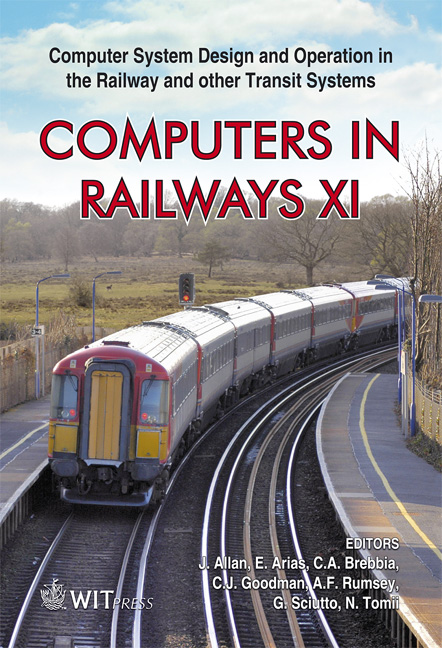SPAD – Reducing Timetable Related Risk
Price
Free (open access)
Transaction
Volume
103
Pages
8
Page Range
163 - 170
Published
2008
Size
431 kb
Paper DOI
10.2495/CR080171
Copyright
WIT Press
Author(s)
H.-H. Kohls & R. Watson
Abstract
This paper will address an important railway safety issue – Signals Passed at Danger (SPADs) – and set out how timetable simulation can be used to give a reliable assessment of how often drivers will see red signals and hence enable railways to manage changes in risk brought about by changes to the timetable. Changes to timetables are known to be a factor in SPAD risk, as a poorly designed timetable can lead to more trains approaching signals at red than a timetable devised with SPAD risk in mind. Typically, the more times trains approach signals at red, the more the possibility of them being passed at danger. Changing the timetable can introduce new ‘problem’ signals (problem in the sense that they are more likely to be at danger when a train approaches) and driver over-familiarity can lead to more SPAD incidents at these signals. RWA Rail has developed a software tool that uses timetable simulation to produce data to enable a quantified assessment to be made of potential timetablerelated SPAD risks. The tool achieves quantified assessments by calculating how often each signal in the modelled area is approached by a train whilst it is showing a red aspect. A unique advantage of using simulation is that it can also estimate the number of red signals seen by drivers under normal operating circumstances, when some trains are running late. The statistics produced highlight changes in red signals that will be seen by drivers and where there are significant instances, these can then be investigated and, where practicable, the timetable (or the infrastructure configuration) can be changed. Where this is not possible, the results can be used for driver briefing. A case study will be presented, setting out how the tool has been used in practice. Keywords: safety, signals passed at danger, SPAD, operational simulation.
Keywords
safety, signals passed at danger, SPAD, operational simulation.





